Dartboard purchasing advice: how to choose the right product
- What You Need to Know
- Darts is played by professionals, as well as amateurs and hobbyists alike.
- While classic dartboards are made with bristles, a variety of electronic versions are also available.
- The size, mounting height, and throwing distance are all officially regulated.
- You need steel-tipped darts to play on a bristle dartboard. For electronic boards, the tip should be made form plastic.
Dartboards: Target Practice for the Modern Age
Since ancient times, humans have tested their skills by throwing objects at targets. Javelin throwing and archery are, after all, tried and tested long-distance fighting techniques. As such, however, they can be dangerous, while also requiring a lot of space. Darts, meanwhile, is a safe alternative, which can be practiced inside. This has contributed to the popularity of darts in recent times as a bar sport, a sport for hobbyists, and even a professional sport.
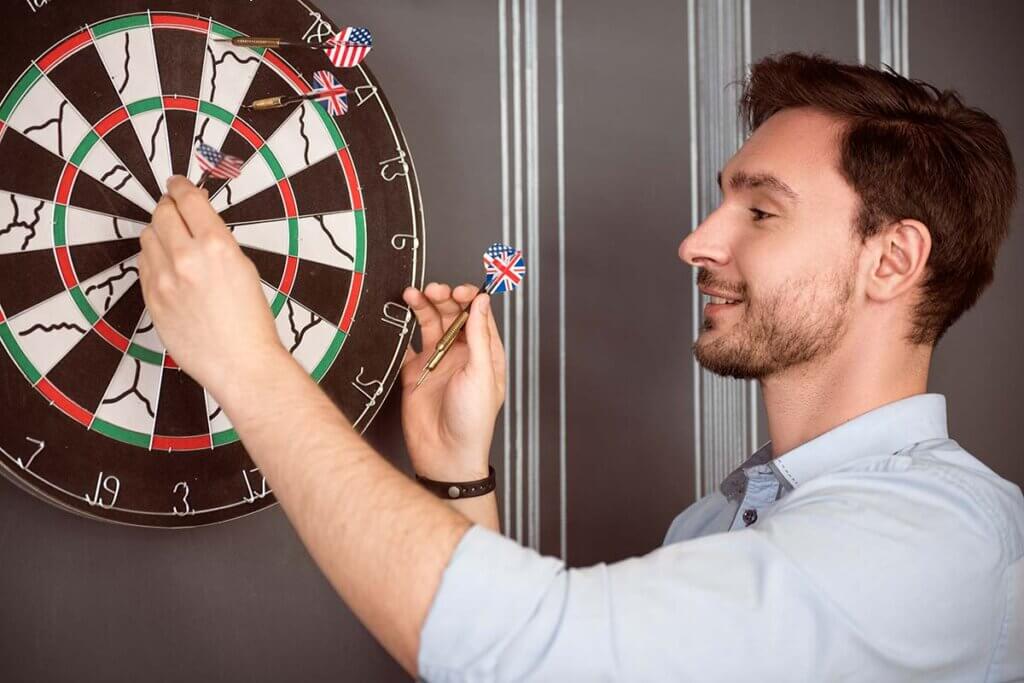
All you really need to play darts is a dartboard and some darts. The board is round and divided into 20 equal sections, with the bull and bullseye in the middle. The bull (the green circle around the inner circle) is worth 25 points. The bullseye itself is worth 50 points. The other sections of the board are labelled with a number which corresponds to their respective value. The numbers are spread out in such a way, that high and low value sections can be found next to each other – for example a 1 and a 5 next to a 20. This encourages a player to aim for a particular section rather than just to rely on luck. Halfway between the bull and the outer ring is a red and green inner ring. Throwing a dart into one of these sections triples your score, while hitting a section from the outer ring doubles your score. Depending on the game, the point of darts is to accurately target different sections on the board. Each player has three darts which are thrown one after another, after which the points are added up before the next player throws.
What to Look Out for When Buying a Dartboard
Dartboards come in different varieties and can be made from several different materials. Deciding on the right dartboard for you should hinge on a few specific criteria.
Types of Dartboard
Dartboards can generally be classed into two main categories: electronic boards, and traditional bristled boards. Magnetic dartboards are usually intended for children and won’t be included in this comparison.
The surface of an electronic dartboard is usually made from PVC and embedded with hundreds of small holes in which the darts can stick. After a hit, the points are counted automatically and distributed to the players. This version is great for kids because the darts aren’t as sharp and pointy as traditional metal darts. Electronic dartboards are commonly found as coin-operated machines in pubs.
Advantages
- Automatic scoring
- Different games pre-programmed
- Safe darts
- Solo practice against the computer
Disadvantages
- More expensive
- Requires electricity
- Bounce-outs are sometimes scored
Bristle dartboards are instantly recognisable as the classic. Professionals use them as they are the only type of dartboard used in official competition. Their surface is usually made from sisal, which is traditionally used for making rope and twine. The downside of using a traditional dartboard is that the mental arithmetic has to be done by the players themselves. There are, however, smartphone apps which will do this for you. Bristle dartboards require steel-tipped darts, making them unsuitable for smaller children.
Advantages
- Professional and traditional
- Nice to throw
- Less noisy
- Doesn’t require electricity
- Hardwearing
Disadvantages
- Scoring needs to be done mentally
- Sharp metal dangerous for kids
Dartboard Material
High-end, bristle dartboards are made from sisal. More accurately, sisal bristles are packed together to create a hard surface. This still allows for darts to penetrate into the surface. If the bristles are hard and tight enough, then the hole created by the dart closes as soon as it’s removed. After several years of use, the sisal will inevitably loosen until the entire board needs to be replaced.
Cork, wood, and paper offer cheap alternatives to sisal. That said, boards made from these materials are not recommended, as their lifespan tends to be very short. This is because, unlike with sisal, the tiny holes left by the darts are permanent. Over time, rips and cracks can begin to form. Despite the difference in quality, the prices are often remarkably similar. Often a bristle dartboard only costs a few pounds more. Obviously professional boards are not essential for messing around or playing party games. If you plan on playing a little more seriously, then a board made from sisal is highly recommended.
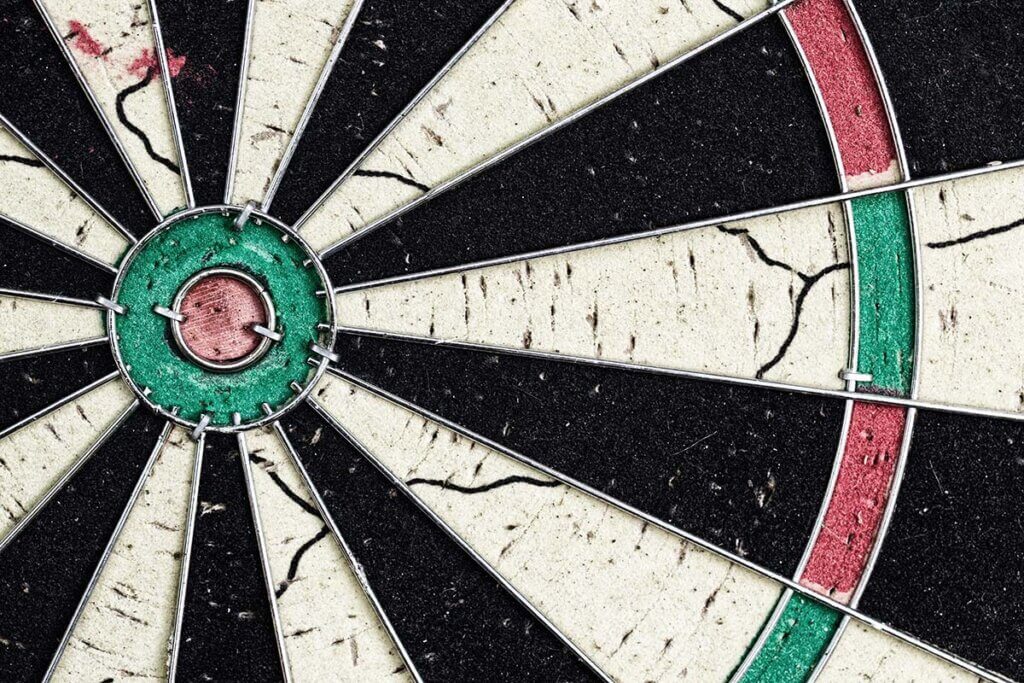
Electronic dartboards are made from plastic. The surface has hundreds of tiny holes in which the darts stick when thrown with force. Because these darts are usually made from plastic, they are also known as ‘soft dartboards’.
Manufacturing a Dartboard
The biggest sign of a low-quality board is in the wiring. If the wires separating the individual sections (or beds) is thick and uneven, then it can cause bounce-outs and scoring difficulty. The wire should be thin and evenly pressed into the board. Poor quality manufacturing is more common with boards not made from sisal, although boards made from sisal are themselves not immune to poor construction. The important thing is that they are hard and tight enough that the holes created by the darts can close once the dart is removed. If the sisal bristles are somehow too closely packed together, then it can prevent the darts from actually sticking into the board.
Better quality electronic dartboards are usually identifiable by their ease of use. Buttons and electronic displays should be made from quality materials. The electronic display should equally be robust and resistant to wear and tear. This is because waywardly thrown darts can often end up striking the buttons and display.
The Metal Wiring
Everyone who has played darts has experienced a dart hitting the wire and bouncing out. This is all the more frustrating if your dart was headed for a good score. The metal wiring is usually at fault for this. It should be thin and deeply set into the sisal bristles. Cheap wire is usually rounded, while better quality versions are made from flattened steel.
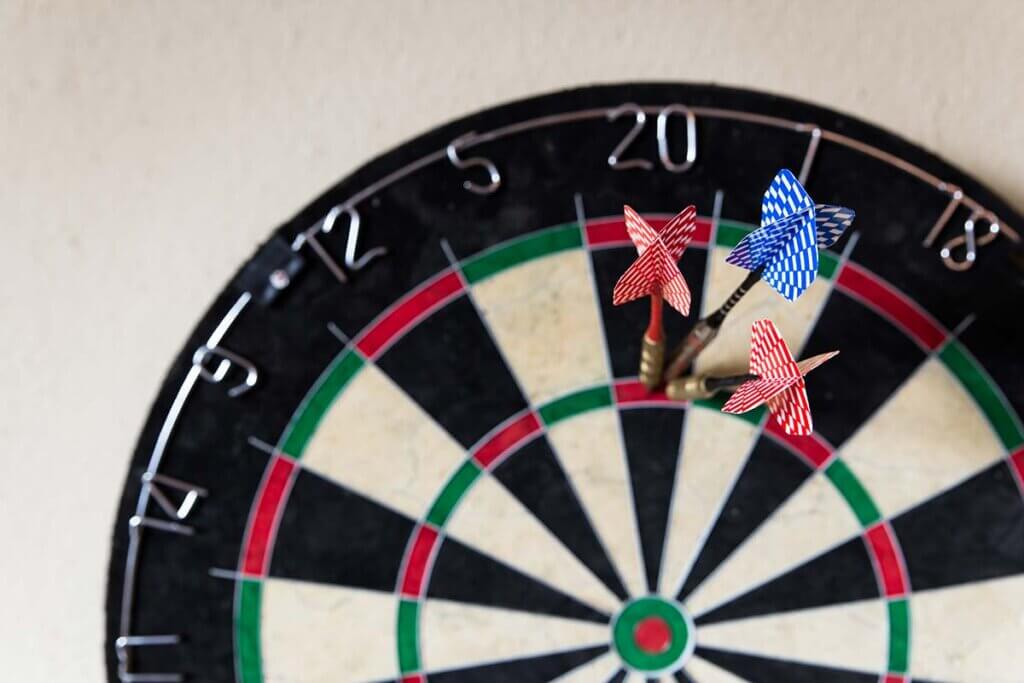
The Numbers Ring
On a lot of dartboards, the ring of numbers around the outside is adjustable, meaning that it can be rotated a few sections. This serves to increase the lifespan of the board. Most players prefer a few specific beds. The 20, for example, is usually the target bed in a lot of games. By shifting the numbers ring a few sections, you can avoid one section of the board wearing faster than the others. Electronic dartboards don’t need a numbers ring because the plastic darts don’t cause wear on the PVC surface in the same way.
Size, Installation, and Weight
The dimensions of a high-end dartboard are correlated to the official requirements of the professional sport. Organisations like the Professional Darts Corporation (PDC) and the World Darts Federation (WDF) are in charge of setting these standards. The diameter of the playable surface should measure 34cm, while the diameter of the entire board should be 45cm. The entire bull has a diameter of 31.8mm, while the bullseye makes up 12.7mm of that measurement. The double and triple beds are 8mm wide.
Professional guidelines should also be adhered to when mounting the board. This helps to make playing conditions uniform, whether you’re playing at home, in the pub, or in a tournament. The bullseye should be positioned at a height of 173cm. The oche (the line behind which players stand when they throw) should be 237cm away from the wall on which the board is mounted. It should be noted that dartboards can weight around 5kg. The wall bracket and screws on which you mount the board should be able to hold this weight without damaging the wall.
The playing surface of an electronic dartboard is usually the same size as a bristle board. Depending on the construction, however, electronic boards can be slightly larger and heavier.
Price and Manufacturer
Cheap dartboards can be bought at a starting price of around £20. These models are, however, usually made from low-quality materials. Opting for a version from a renowned manufacturer is the best way to get yourself a tournament regulation board. A few of the most famous manufacturers are Winmau, Unicorn, KingsDarts, Bull’s and Harrows. Their boards are generally not that much more expensive. In fact, a professional standard dartboard can be bought for as little as £35. A board from Unicorn, the tournament standard, will set you back around £70. There is really no reason to pay any more than this for a bristle dartboard, although the upper price limit does go up to around £90.
The opening price for an electronic dartboard is similar to that of a bristle one. The upper price range is, however, potentially higher. For a high-end, fully-equipped electronic dartboard, you could expect to pay around £200. Normally, however, they cost somewhere between £70 and £100. Some of the most popular manufacturers of electronic dartboards include Best Sporting, HOMCOM, and Ultrasport.
Useful Equipment for Playing Darts
Not much is needed for a game of darts other than the board and the darts themselves. There are, however, a few extras which help to make the game easier and protect your living room from waywardly thrown darts. For electronic models, on the other hand, everything should be included upon purchase, except perhaps the plastic darts.
The Darts
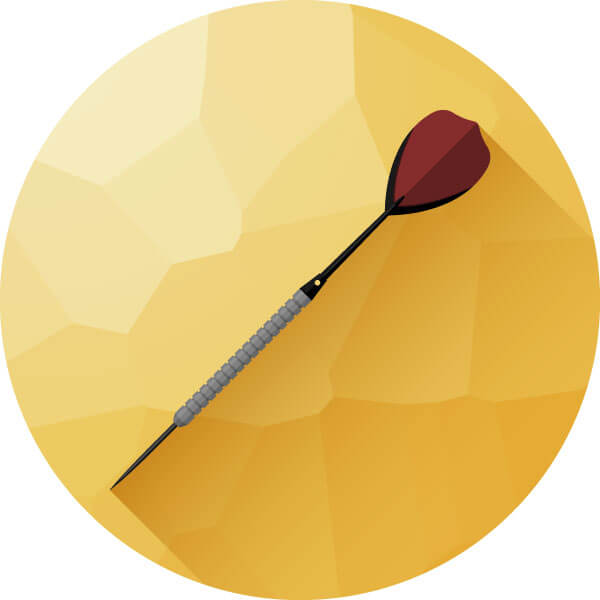
The only thing other than the board that you need for a game of darts, is the darts themselves. These can be categorised as either soft, or steel darts. Soft darts have plastic tips and are tipically used for electronic boards. Steel darts, meanwhile, are used by professionals and those playing on a bristle board. There are, however, also darts with plastic tips which are suitable for use on a bristle board. The downside of these darts is that they deteriorate quickly. Metal darts offer that authentic darts feeling and weigh a little more—usually around 20 grams.
Chalkboard or Whiteboard
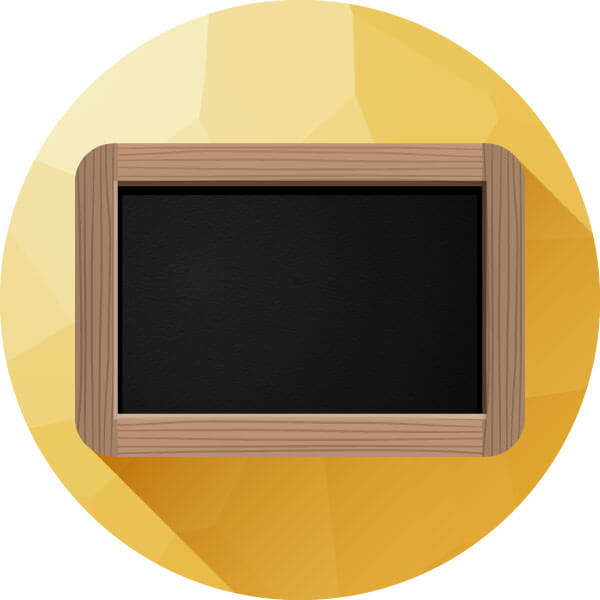
Having a chalkboard or a whiteboard on the wall next to your dartboard can help you to recreate that pub feeling at home. As well as creating an authentic atmosphere, chalkboards allow you to count up your score as you go. In comparison to a smartphone app, a chalkboard allows all the players to follow along at the same time. Electronic dartboards, meanwhile, count the score themselves, meaning that no extra equipment is necessary.
Dartboard Stands
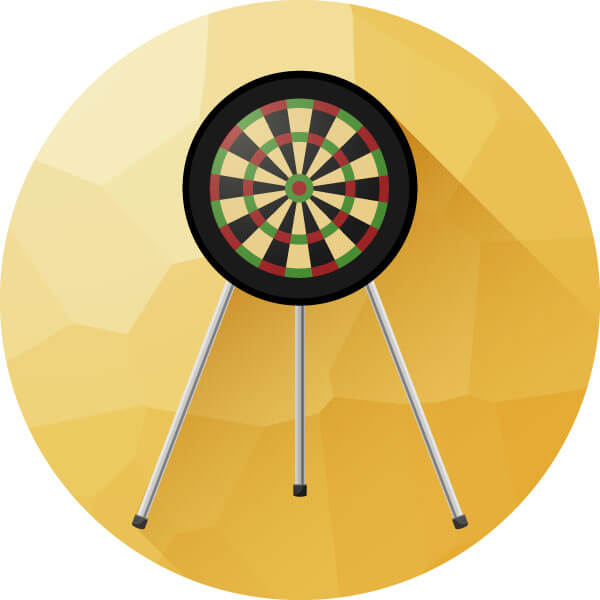
Anyone who doesn’t want to hang their dartboard on the wall can instead look towards a dart stand. Those can be placed in the middle of the room and stowed away again once the game is over. They also help to prevent marks on the wall or on the door. The downside to this method is that badly thrown darts end up on the floor. If you’re playing outside on grass, this isn’t a problem. Inside on parquet flooring, however, the darts can be quite damaging. Should you choose to buy a dartboard stand, then a floor protector is an essential accessory.
Dartboard Surround
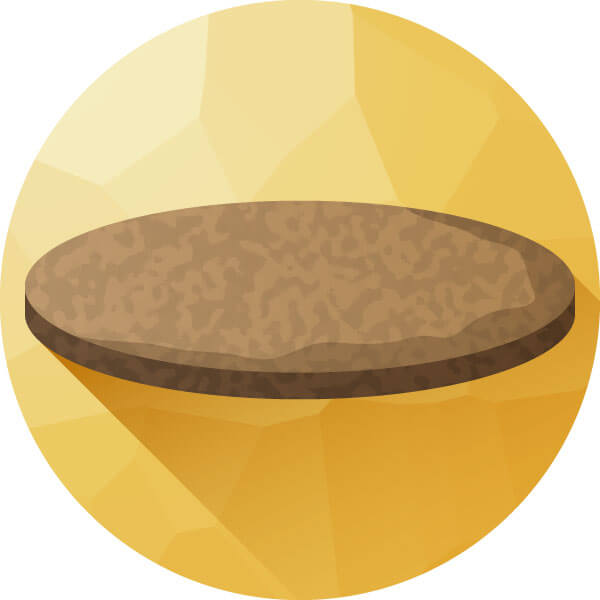
A dartboard surround should be mounted behind the dartboard so that the wall is protected from errand darts. Particularly for beginners, the darts can often be rather inaccurate. Wood and cork are good materials for this as the darts remain embedded without going through the material. The right size for a surround depends on the accuracy of the player and the dimensions of the room. The protective surround can be either round or square, as long as it covers enough of the surface.
A Sport for Professionals, Amateurs, and Pub Regulars Alike
Darts is usually played in one of three different settings. Professional darts is played at tournaments, with the winners collecting prize money. Darts is also a great pub game, in the same vein as pool or snooker. Lots of people also have dartboards at home for playing with friends and family.
Professional Sport
Darts is a recognised and well-loved sport. Professionals travel from city to city, playing in large halls and venues. The tour is televised live. The UK is the home of darts. It is here that most of the tournaments take place. The point of professional darts is to win money at tournaments while collecting enough points to take part in the World Championships. Lots of professionals even have their own sponsors.
In most tournaments, competitors play ‘501’, in which the players begin with 501 points and count backwards down to 0. At official tournaments, the ‘double out’ rule is enforced, which states that the players need to hit a double with their last dart to reach 0 points.
The Nine-Darter: The Perfect Game
A game of 501 can be ended with a minimum of 9 darts, although this is a rare occurrence, even amongst professionals. Players, who are able to do this in live competition, are destined for highlight reels and can send the watching fans into raptures. A nine-darter is the definitive darts power play and is guaranteed to light up the crowd. Even the opponent tips his hat to a player who has just hit a nine-darter.
Pub Sport
From its humble beginning in British pubs, darts has found its way out and around the globe. It is the pub game by which local legends are created and long-standing sporting rivalries renewed. Darts can usually be borrowed from the bar for a small fee. The game is perfect for playing while having a chat at the same time. Increased alcohol intake can at some point begin to have a negative effect on darting performance, resulting in the occasional never-ending match.
Hobbyists
At home is a great place to test out different darts games with family and friends. When starting out, luck plays an important role. As a beginner, it’s very difficult to aim your darts at the bullseye or the triple twenty. However, the amount of fun you can expect to have increases with improved throwing ability. Enthusiastic hobbyists can even join a darts club and practice against people that play at a similar level to them.
What Different Types of Game Are There?
Darts can be played in any number of different ways. Most games have at least one thing in common: two players have three darts each and take turns trying to hit certain targets as accurately as possible.
301/501/701
The most commonly played version of darts is 501. This is the game played by professionals at tournaments, in which all players begin on 501 points. The points scored each round are subtracted until someone reaches 0 with a double on their last dart. Hitting a double means that, for instance, should a player be left with 18 points, they would need a double 9 to secure victory. Occasionally, this form of the game is also played with a ‘double in’ rule, in which the first dart must also be a double. The same rules apply for 301 and 701, only the length of the game is either shortened or extended accordingly.
The following video shows darts legend Phil ‘The Power’ Taylor nailing a nine-darter at the World Matchplay Championships. This is just one of many outrageous finishes he produced across an unprecedented career in the sport.
Cricket
Cricket is a much-loved bar version of darts. Instead of counting points, particular beds have to be hit—specifically 15 through 20 and the bull all need to be hit a minimum of three times. Doubles and triples count for double or triple the usual score. The bull counts as a single hit, and the bullseye as a double hit. The first player to hit all of the required numbers three times is the winner.
Around the Clock
In this game, all of the numbers need to be hit in ascending order. A player is only allowed to proceed when they have hit the previous number. At the end, the bull and finally the bullseye itself need to be hit. Beginners can, however, spare themselves this part of the game, as it can really drag on.
Tips for Mounting, Lighting, and Maintenance
Using and maintaining dartboards is relatively simple. There are, however, a few things to take note of when mounting the board. It is important, for example, that your walls are protected and allow for good lighting.
Mounting
It is recommended to stick to the official tournament regulations when hanging a dartboard. This helps to create that real darts experience. You should also make sure that the surrounding area behind the board is not going to get damaged by missed darts. A dartboard surround is perfect for this. Darts are capable of sticking in the wall or leaving behind tiny holes in the floor. This is particularly troublesome if your floor is made of parquet. Make sure that your floor is covered by a material that can protect the floor from the sharp tip of a wayward dart. This stops bounce-outs from landing on the floor. The best kind of material for this job protects the floor as well as the darts themselves. Wood and cork perform this function well. After the game, any floor covering can be removed. Electronic dartboards, meanwhile, require no additional matting.
Lighting
Hitting the dartboard in low light becomes even harder than it is already. For this reason, you should make sure that your dartboard is well lit and well hung. Hanging your dartboard under a light source is a great way to do this. If you choose to hang your dartboard in a dimly lit space, then additional lighting may be required. For example, you could hang fairy lights around the outside of the board or a lamp directly over the board. At the very least, you could point a desk lamp towards the dartboard.
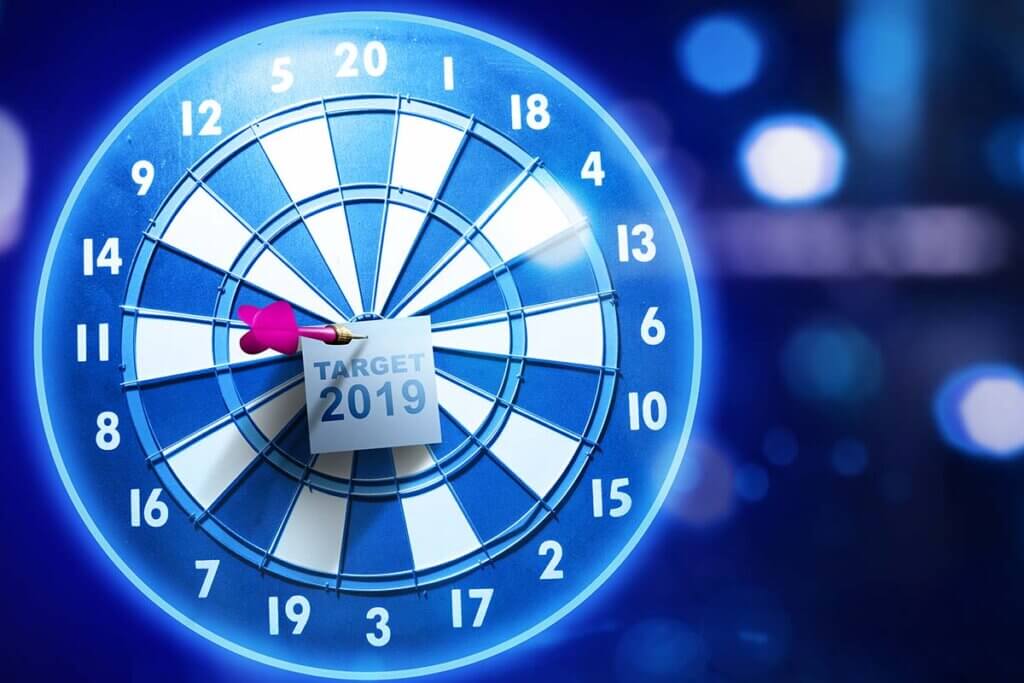
Maintenance
Bristle dartboards require very little maintenance. You should, however, check every now and then if certain beds are worn out. Should this be the case, it is recommended to shift the numbers ring a few sections.
Electronic dartboards don’t have this problem. They do, however, rely on technology which is always liable to breaking down. There is very little that most people can do about this problem. You can play on electronic dartboards without them being connected to a power source, although you would have to count the points manually.




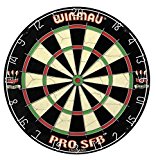
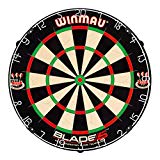
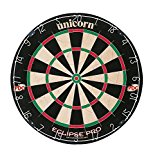
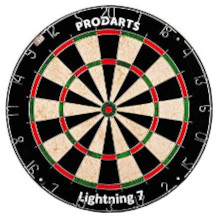
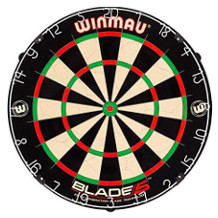
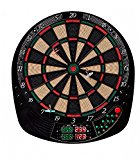

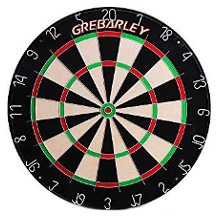
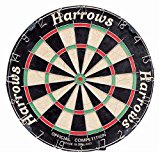
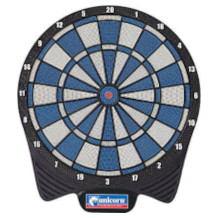

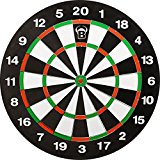
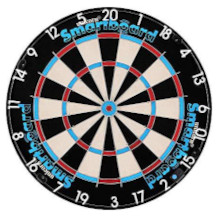
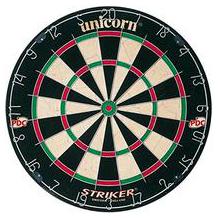
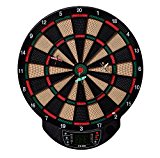

 2,772 reviews
2,772 reviews



